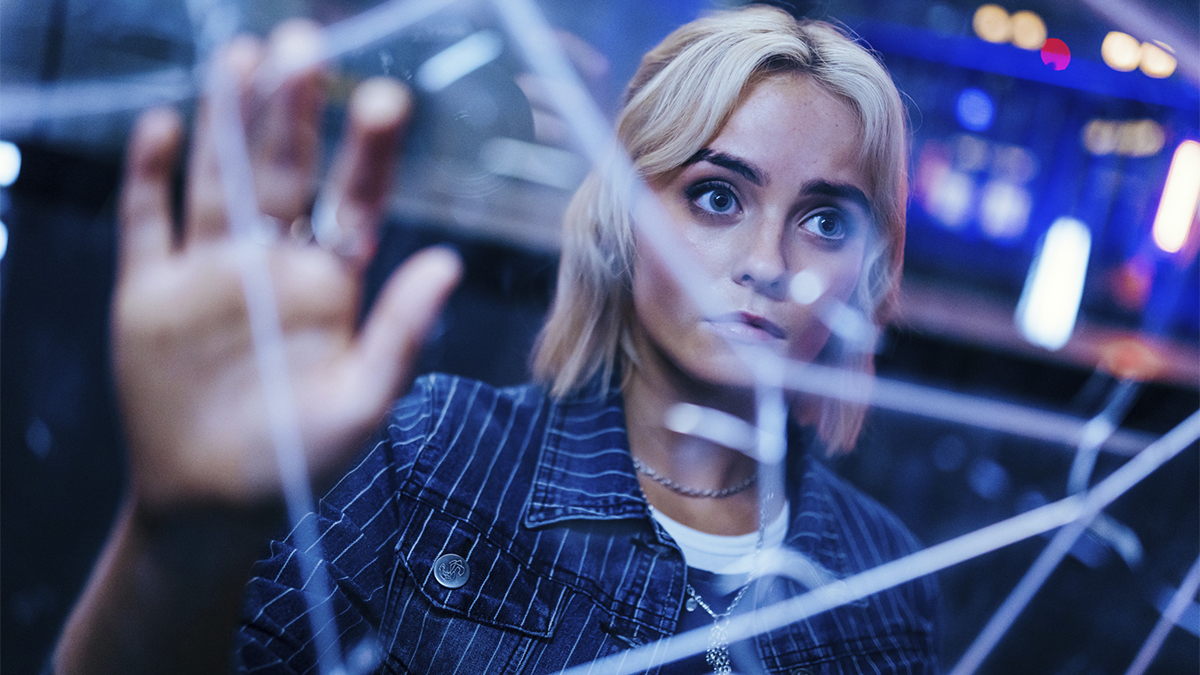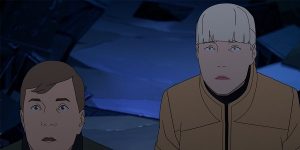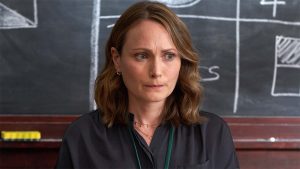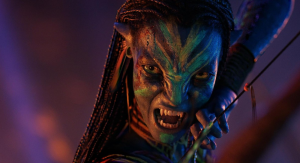
Warning: contains spoilers for Doctor Who series 14 finale “Empire of Death”
That’s it now, until December. After bogeymonsters and bombs and Bridgerton balls, Doctor Who series 14 is over. The universe was saved, Sutekh has gone for good, the Susan Twist conundrum was answered, Ruby Sunday solved the mystery of her birth, and the Doctor is alone again and considering looking up his granddaughter (Varada Sethu, you couldn’t be playing Susan, could you?)
Between now and the arrival of Steven Moffat-scripted 2024 Christmas special “Joy to the World”, there’s plenty of time to chew over what we’ve seen, starting with any lingering questions from “Empire of Death”. SPOILERS ahead.
What is the Memory TARDIS?
UK fans first encountered the Memory TARDIS (and its many Easter egg references to previous Doctor Who stories) in November 2023, as part of the show’s 60th anniversary celebrations. It’s the setting for Tales of the TARDIS, a companion series exclusive to BBC iPlayer that repackages classic serials with new in-character, scripted scenes between former Doctors and companions. Colin Baker, Peter Davison, Sylvester McCoy and more returned to revisit their glory days in the role. The initial six-episode Tales of the TARDIS series was filmed in a single week in September 2023, two months after filming wrapped on “Empire of Death”.
As the episode explained, “It’s a TARDIS, remembered,” a collection of memories of the Doctor’s previous adventures that’s made manifest in the Time Window, and powered by the strength of memories: “If time is a memory, then memory is a time machine.” Unlike the Doctor’s actual TARDIS, it also doesn’t come with alien god of death Sutekh piggybacking on it, which makes it a handy way for the Doctor, Ruby and Mel to escape the wave of death Sutekh unleashes.
How long had Sutekh clung to the TARDIS?
“I have travelled with you for all this time, riding the spine of your ship, evolving into my true godhead.”
The way Sutekh tells it, it seems like he’s been riding the TARDIS ever since the Doctor trapped him in a time corridor to age him to death at the “Pyramids of Mars” (1975) climax. Instead of dying, Sutekh tells the Doctor that he found a home by clinging to his “infernal machine” and hiding “for so many years.” That doesn’t explain whether, when Fifteen cloned Fourteen’s TARDIS at the end of “The Giggle”, Sutekh was also piggybacking on that one.
But Sutekh is dead now?
Yes. Or as dead as things on Doctor Who ever are. The Doctor (with a conflicted conscience about it for some reason) cut him loose in the Time Vortex and he burned up.
What was the Susan Triad trap?
Everywhere the TARDIS landed while Sutekh was parasitically clinging to it, he used his psychic powers plus the TARDIS perception filter (the bit that makes it seem inconspicuous to passers-by) to create the same woman, multiple times over. The perception filter meant that each version of this woman fitted in contextually with her surroundings, hence her appearing as different species in different planets.
When Sutekh finally revealed himself and released the wave of death, each of the various Susans across the many planets acted as his conduit to spread it. “I birthed them all – my angels of death, now standing triumphant across the universe.” The Doctor felt responsible for the wave because it killed everywhere he’d stepped foot, like his carbon footprint catching up with him.
Sutekh named the Earth version of his repeat woman “Susan Triad” to lure the Doctor towards her so that he’d be the first to receive the gift of Death (he’d picked up the “secret” that Susan was the name of the Doctor’s estranged granddaughter from his time stowing away on the TARDIS – and presumably, he’d also learned what an anagram and homophone were, and had a wicked sense of humour).
Why didn’t Sutekh kill the Doctor and Ruby?
Because he’d developed a weird obsession with finding out the secret of Ruby Sunday’s birth. When Ruby stepped onto the TARDIS along with a mystery that even the power of Davina McCall couldn’t solve, the impossibility of it all piqued Sutekh’s imagination and he needed to know.
If Ruby and her mother are ordinary humans, why did it snow?
We’d love to be able to explain that one. Can you? The bigger question might be why schoolgirl Louise Miller wore a full-on drama department costume hooded cloak instead of just a hoody to drop off her newborn baby at the church in 2004. And if she wanted to name her daughter “Ruby” (a little nod to her father’s similarly red jewel-related surname of “Garnet”), then leaving a note might have been more fool-proof than pointing at a sign on CCTV…
Who was “the Kind Woman”?
Sian Clifford’s character appears to be simply a random victim of Sutekh’s death wave, included to put a human face on the planetary destruction. Her scene with the Doctor was a reminder of the great sadness caused by Sutekh’s memory-killing onslaught of death, and the scene of her and her daughter revived on a lush, green planet is a victory for the Doctor.
Also, she had a spoon.
So, Fourteen really didn’t lend a hand?
Brutal. Fourteen must have temporarily turned to dust along with everybody else, and then sprung back to life to enjoy more al fresco dining with the Nobles when Fifteen fixed everything. He is retired, after all.
Who is Mrs Flood?
A god of the pantheon? A former companion returned? It’s inconclusive, but we do know that Anita Dobson will be coming back to the show.
Doctor Who series 14 is available to stream now on BBC iPlayer and Disney+.
The post Doctor Who Series 14 Finale Explained appeared first on Den of Geek.








